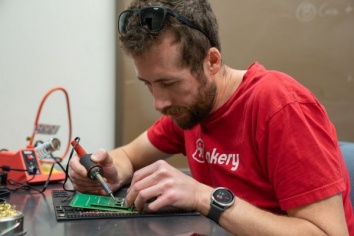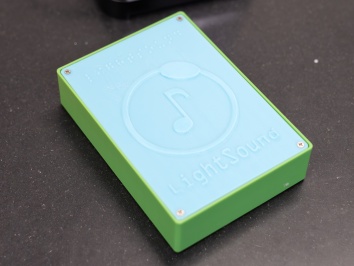Through a series of workshops held January 28 and 29 by the LightSound Project and with the support of the UT Austin Department of Astronomy, the University community built 140 LightSound devices. By converting light into sound, these handheld devices make solar eclipses more accessible to the blind and low vision community.
The devices built during this and other LightSound workshops held nationwide will be donated to viewing events ahead of the April 8 total solar eclipse.
"It was a great success," said Allyson Bieryla, an astronomer at Harvard University who led the workshops.
What Is a LightSound Device?
Bieryla helped develop the LightSound device as a tool to increase access to the 2017 total solar eclipse. It uses a technique called sonification, which is the process of converting data (or light intensity in this case) to sound. As the Moon eclipses the Sun during a solar eclipse the sunlight begins to dim and the LightSound device outputs a change in musical tone.
See one in action here!
The device can be attached to headphones for a personal experience or to a speaker for group listening.
Get Involved
The LightSound Project’s goal is to build over 750 devices before the April eclipse. For information on upcoming workshops, visit the LightSound website or send the LightSound team an email.
If you or someone you know would benefit from a LightSound device, you can request one through the project's website.
This work is supported by the Simons Foundation and is part of its In the Path of Totality initiative.
Media Contact
Emily Howard
Communications Manager
McDonald Observatory
512-475-6763
news@mcdonaldobservatory.org







